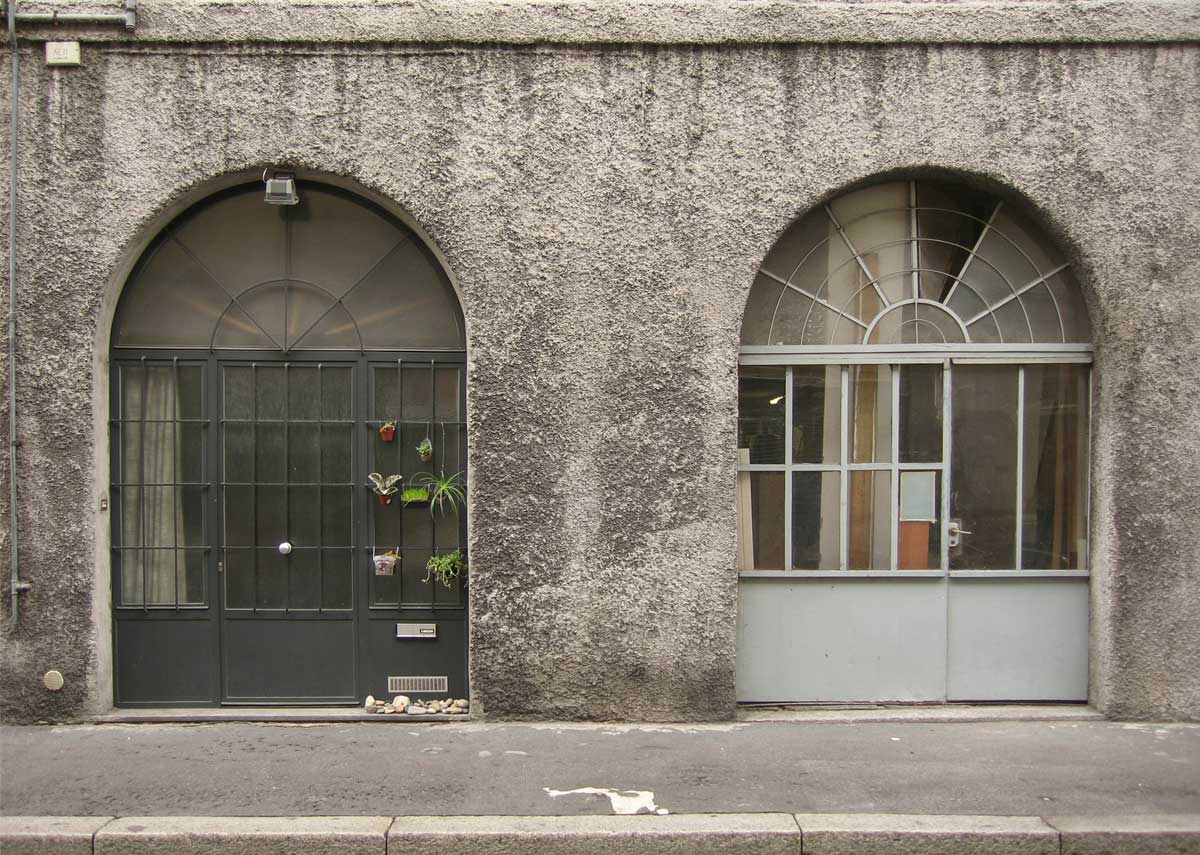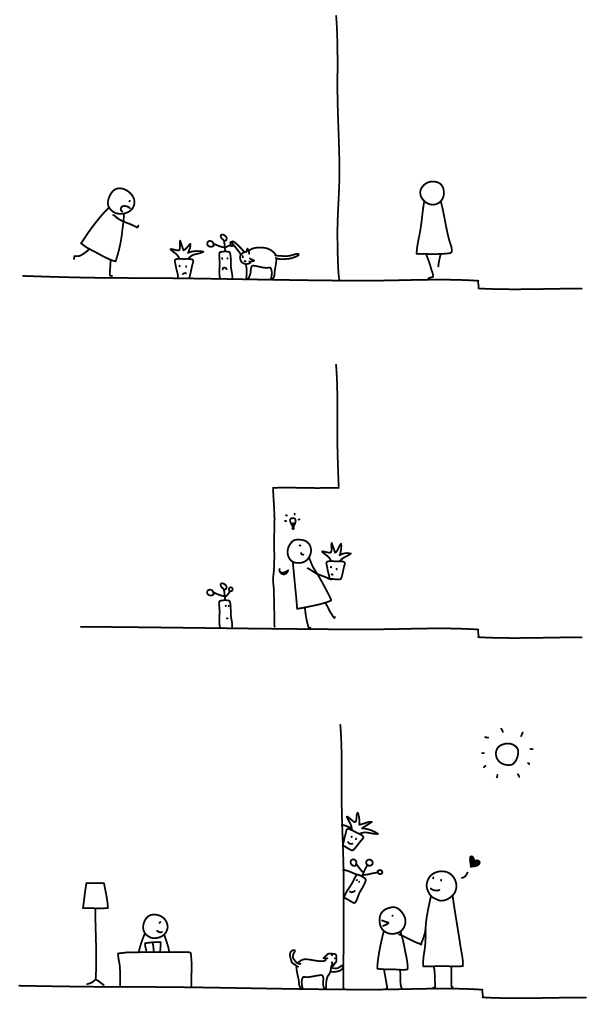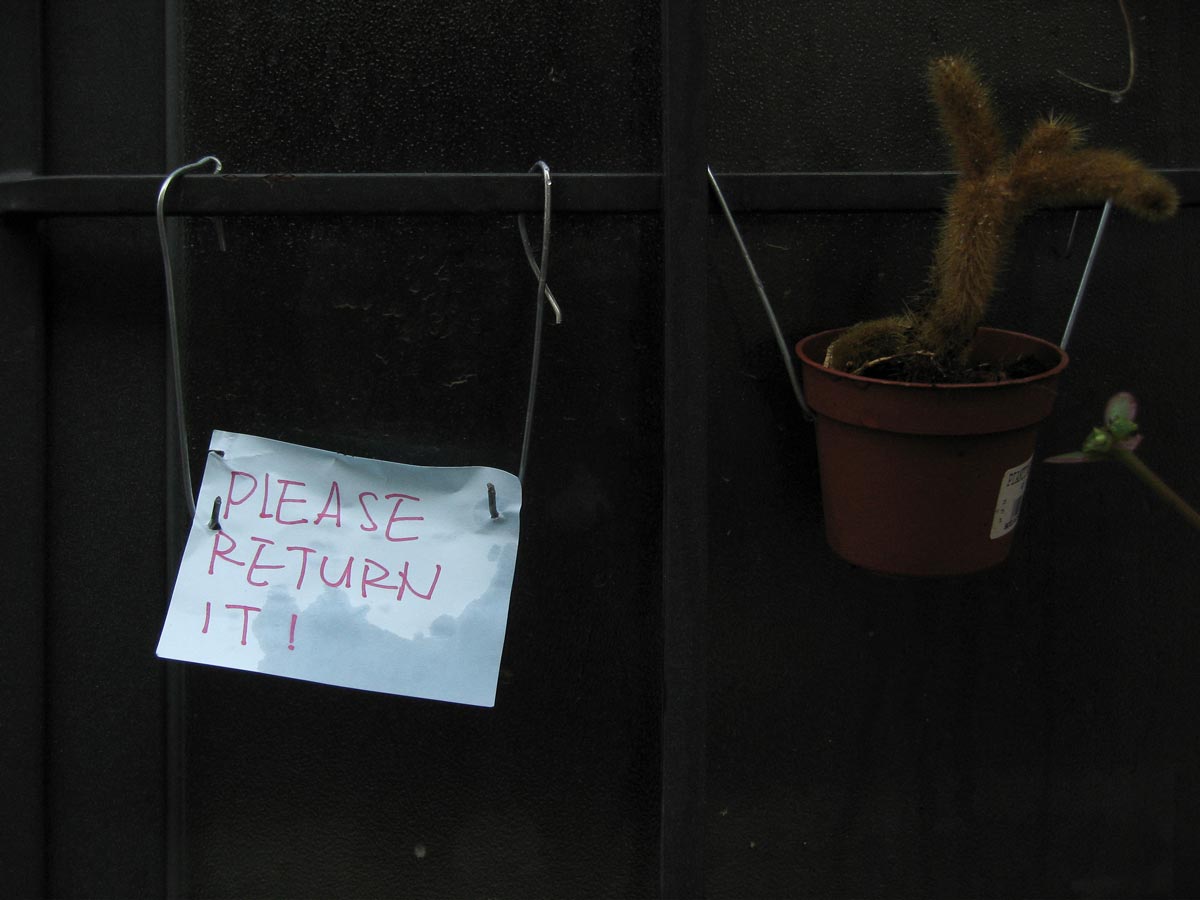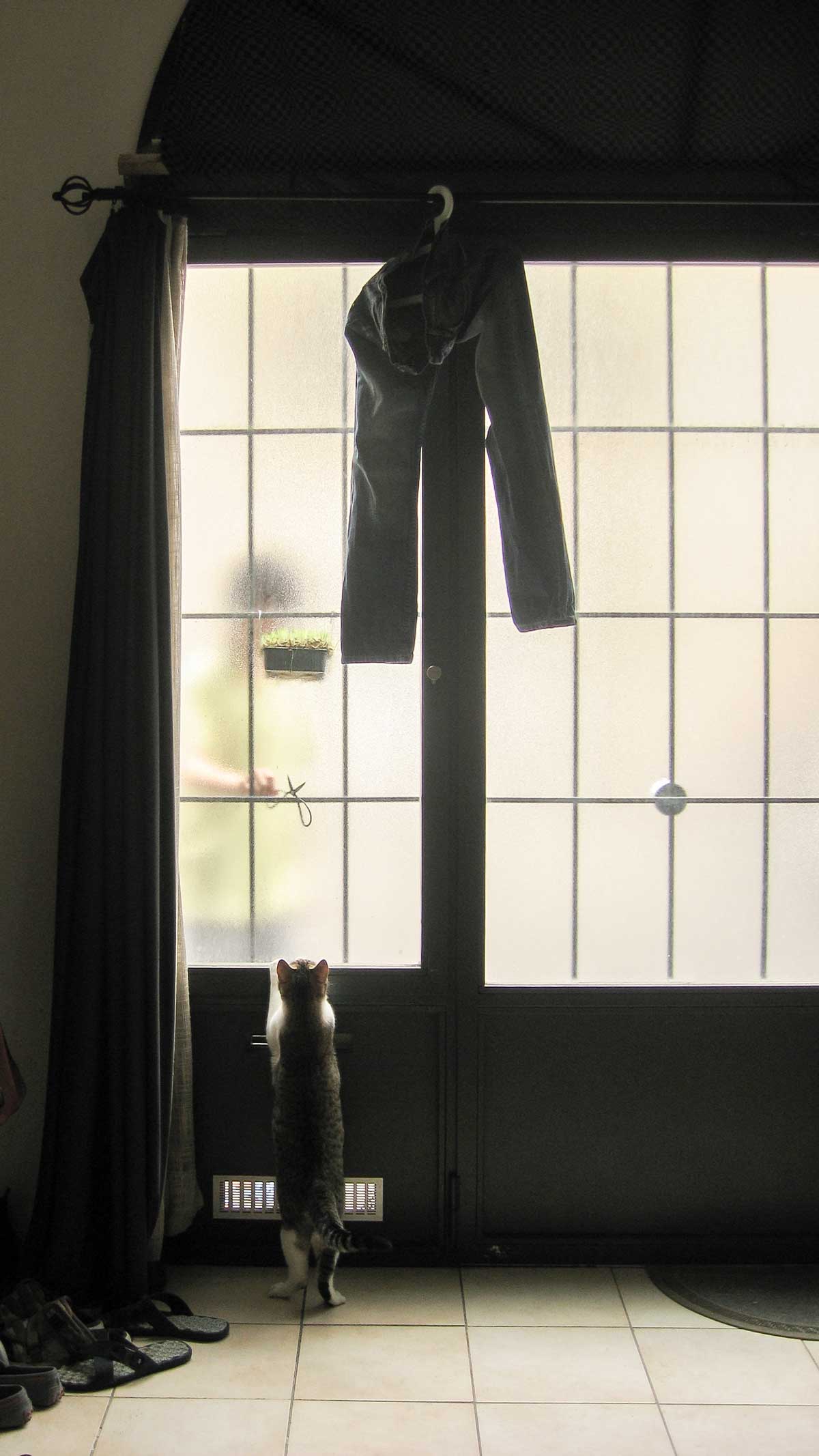
Our first home in Milan was the left one above, with a big door facing street directly. Functioning as both door and window, most of its surface was made of glass; concerning privacy, translucent glass was used.
This type of houses occupied the whole ground floor of that building along the street. They were shops, we guess. Once being renovated into private houses, we found a mixed feeling of both publicness and intimacy at the boundary. Same as many other shy people from the far-east, when we passed our neighbour’s door, or we noticed somebody standing in front of our door, we would feel uneasy.
One day, we bought some small plants from a supermarket. They needed sun, they were not shy to people (maybe), and our cat was trying to kill them.

So we made Door Garden, an effective way of growing plants vertically. Surprisingly, it softened the edge between private and public spaces: many people stopped to watch it—especially kids; we were also happy to see that from inside, no longer wondering what they were wondering.
To push such little interaction a bit further, we made some notes to talk to passengers, such as, “How are you today?”. One day, one of our little plant was missing, so we made a note, big size, written, “please return it!” Then we heard someone sighed outside the door: “Bad people!”.

After all, it was an attempt to live within the neighbourhood. It was such a small design, but it really did something to us, to the street, to the world.

